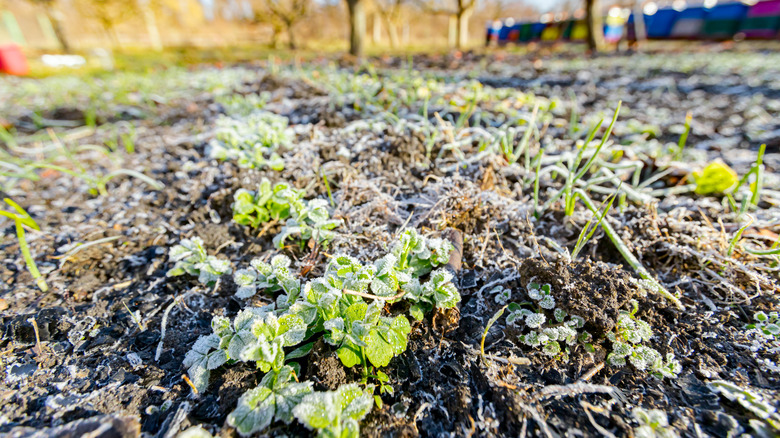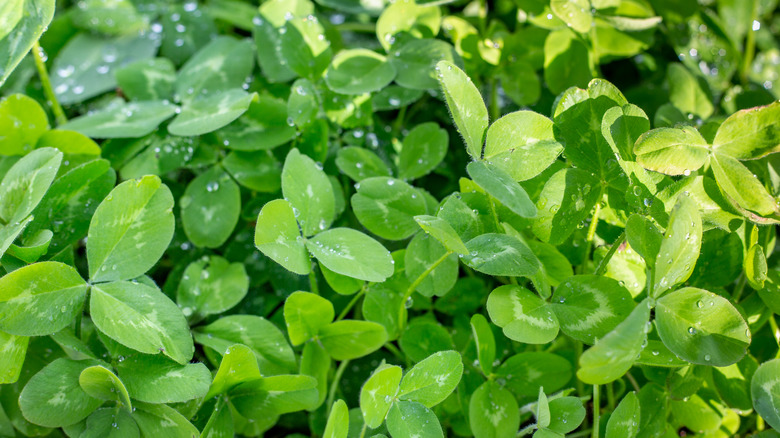Grow This Type Of Plant To Create Healthier Soil In Your Yard And Garden
The idea of spring no longer feels like such a distant thought as days become longer and temperatures begin to warm. For gardeners, it might seem tempting to pass the remainder of winter daydreaming about when long days working on your plots can resume. But instead of musing, you can get proactive — in fact, right now is an ideal time to prepare the soil in your garden for upcoming spring crops.
Healthy soil is fundamental to any garden taking off. Rich soil is full of beneficial microorganisms that turn organic matter and minerals into vital plant nutrients so your fruits and vegetables can thrive. On the other hand, if your soil is in rough shape, your plants will inevitably suffer and become more vulnerable to soil-borne diseases. Problems often arise when the soil is bare and exposed, so protecting the ground with a living mulch that acts as a barrier is key to keeping your soil healthy. Cover crops work magic by doing just that and recharging depleted soil as a bonus.
Cover crops replenish nutrients in the soil by increasing organic matter and improving soil fertility, laying a solid foundation for your garden. They limit nutrient runoff and reduce soil compaction, which will help your crops thrive in the spring.
Choose a cover crop based on soil needs
Cover crops are considered green manure and are a great alternative to animal manure or chemical fertilizers to prep your soil for a successful planting. You can choose particular cover crops based on the soil's needs and plant them from the beginning of fall into early spring. Popular cover crops designed to increase organic matter in your garden include alfalfa, clover, beans, peas, and vetch. They all fall under the legume family, which is known to infuse the soil with nitrogen – a fundamental element that supports plant growth. Usually, plants that are lacking nitrogen will start to turn yellow.
Keep in mind that rotating crops is a technique used to feed the soil for your next planting, so consider what you intend to plant after the legumes have run their course. Plants that tend to need a lot of nitrogen include tomatoes, peppers, cucumbers, and leafy greens.
Cover crops protect the ground during winter
Beyond infusing the soil with nutrients for spring plantings, cover crops protect the ground from soil erosion and soil compaction. They act as a living mulch by spreading across the soil and protecting it from wind and heavy rainfall. This is important because compacted soil can be difficult to garden with because it does not effectively retain and filter water, so your plants in the spring will inevitably suffer. Further, cover crops have an amazing ability to increase water retention in the ground and improve airflow, so the soil is recharged for spring and summer plantings. They also can suffocate weeds and prevent pest infestations to keep your soil nice and healthy.
The cusp of springtime might be a little late in the season to be planting a cover crop, but that does not mean it's completely off the table given it will still provide benefits. Keep in mind that legume cover crops grow rather vigorously, so if you plant one now, it will easily provide benefits in 30 to 90 days. But if you feel you have run out of time and still need to recharge the soil, consider the many other ways to add nitrogen to your soil for a healthier garden.


